The homecoming of the cheetah to India leads one to wonder what exactly are the differences between it and leopards that, often visibly, prowl India's jungles and countryside?
Do you know the differences, dear reader?
Is the cheetah smaller? Or the leopard?
Who likes whom?
Will Indian leopards welcome the cheetah?
Test your Big Cat IQ:
You have to answer each question to move on to the next.
1. Who is faster?
Answer: A cheetah is even faster than a fairly peppy sports car. Its body build and physiology -- strong heart and lungs, long legs, light lithe frame, lengthy tail and height -- allow it to move at speeds beyond 100 km/hour and it can accelerate from rest to 100 km/hour in three seconds flat.
It is the fastest land animal. There are 10 birds faster than the cheetah -- the peregrine falcon leads the pack travelling at 389 km/hour when it wants to (just fyi, the average commercial airliner travels up to 900 km/hour).
Chunkier leopards are slow pokes, rarely topping anything close to 60 km/hour, but make up in the sporting ability department with their climbing and swimming skills.
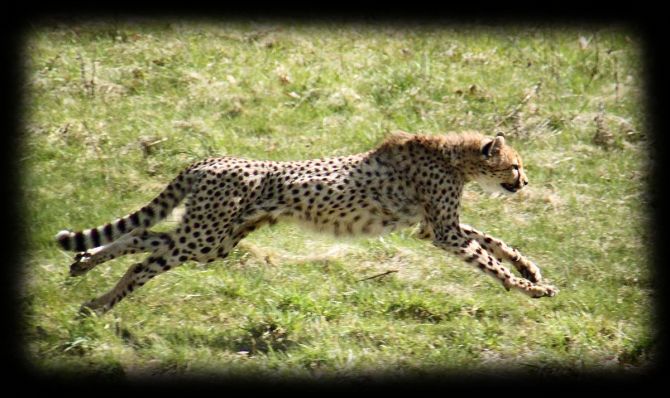
2. Is this cheetah or the leopard?
The population of this big cat, the world over is scarily tiny: Just about 7,100 as per the last count in 2016. It exists, as per 2017 figures, in approximately 9 per cent of the range in which it once existed.
Answer: The Cheetah. Once upon a time the cheetah was found in Africa, Asia and Europe.
According to a study published by the US's National Academy of Sciences in 2016, about 7,100 cheetah were left then -- just a dozen or maybe less are in Iran.
India had loads of cheetahs but their numbers began to drop by the 1800s. Their prey of choice was the blackbuck and wherever the blackbuck was found in India, the cheetah was found too.
According to the Bombay Natural History Society, the last three cheetahs in the wild were shot in 1947 by Maharaja Ramanuj Pratap Singh of Surguja, in present-day Chhattisgarh, although a cheetah is said to have died in a well in 1957 in present-day Telangana.
Leopards on the other hand are far, far more numerous because of their ability to adapt to all kinds of environments and eat prey, in a pinch, that's not part of their usual diet, like bamboo rats, langurs and dogs. They still survive in some 75 countries in the wild.
In India alone it was roughly estimated in 2020 that there are 13,500 leopards.
In spite of this not too bad population strength worldwide, leopards are still considered endangered and exist approximately in 25 per cent of the range in which it once existed.
That's because of terrible rates of attrition at times -- like, according to a Traffic report, four leopards vanished horrifying every week in India between 2002 and 2012!
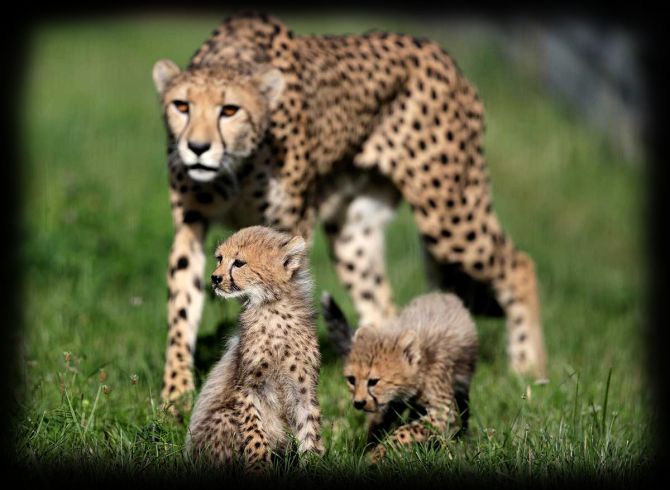
3. Cheetah or leopard?
Can a leopard or cheetah change his spots. Which?
Answer: Actually, both of them.
Technically there are variations of cheetahs called king cheetahs that have markings something sort of akin to stripes and its spots become fuzzy.
And the awesome-looking black panther is a melanistic colour mutation of the leopard.
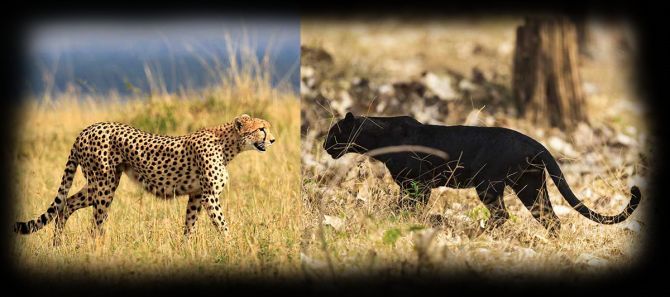
4. One of these big cats prefers to wander at night.
Answer: The leopard, with its excellent night eyes, has mostly nocturnal habits prowling about often till dawn. Cheetahs by contrast are firmly day creatures.
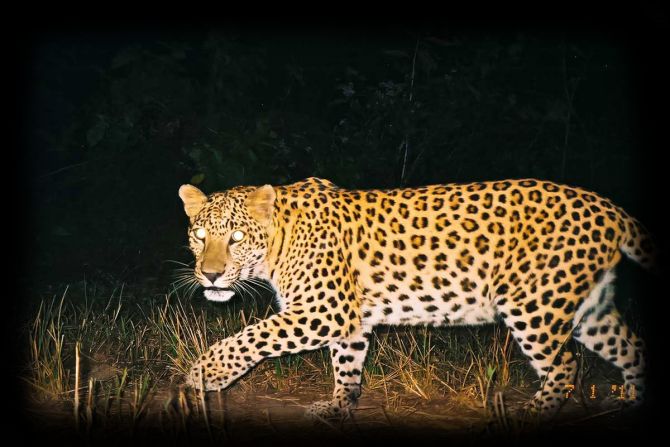
5. A cheetah can eat a leopard.
A leopard can eat a cheetah.
Which statement is true?
Answer: A leopard can kill a cheetah. But not an adult cheetah because he/she is too fast, but they prey on cheetah babies
The cheetah's other mortal enemies are crocodiles, hyenas and lions.
On the other hand, the enemies of leopards are: Lions, tigers, crocodiles, occasionally pythons. On a rare occasion a large group of baboons attacked and dined on a leopard at Tanzania's Serengeti, according to the African Journal of Ecology.
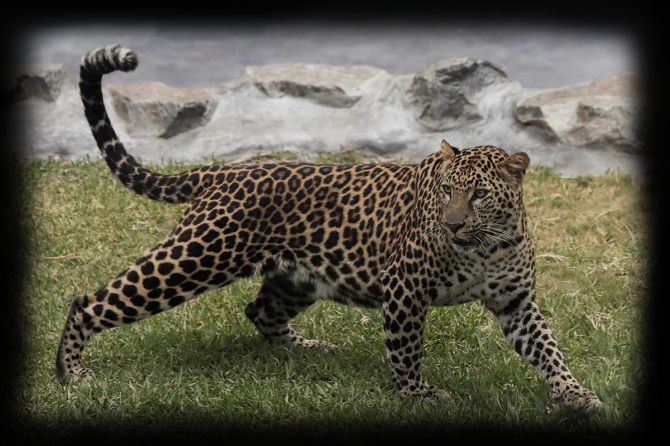
6. Who is more sociable?
Answer: The cheetah is considered almost as gregarious as lions. 'Coalitions' of male cheetahs, according to Britannica.com, often live together amiably for life. They don't roar much.
Leopards are usually loners, but can sometimes have a relationship with their cubs and mate.
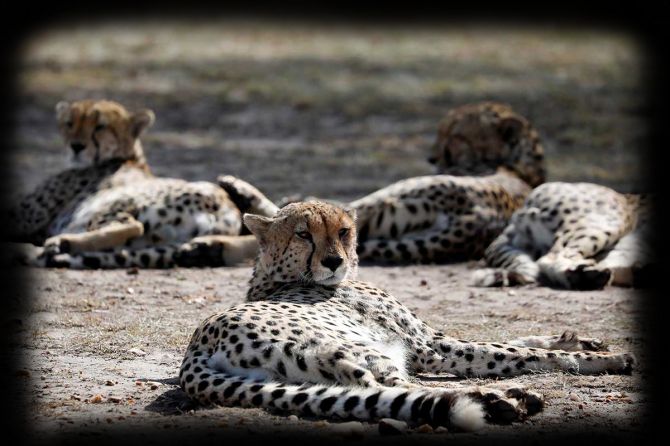
7. There has been no documented incident of this big cat killing a human.
Answer: Cheetah. Till date cheetahs, very shy animals, have not killed a human being.
Tales of man-eating leopards are legendary. For instance, Jim Corbett's Leopard of Rudraprayag had killed 125 humans before he was shot dead by the Nainital-born hunter and conservator. Kumaon in present day Uttarakhand had its equally fearsome maneaters, back in the day.
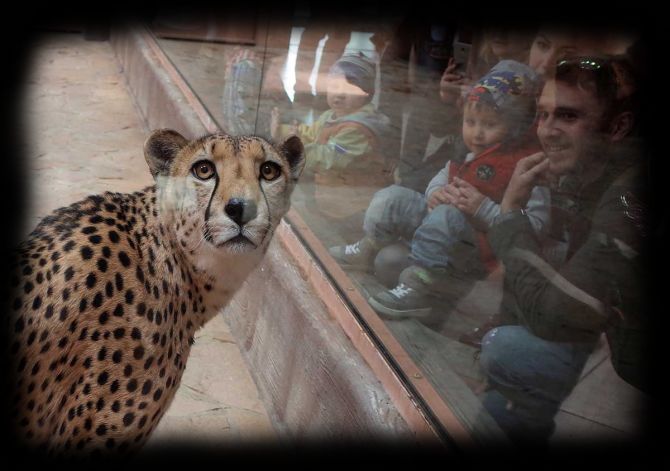
8. Who are commonly found in tropical jungles?
Answer: Leopards. A versatile animal, he can live in several weather belts and eco-regions and types of habitats. He can exist on the edge of a city even as Mumbai well knows.
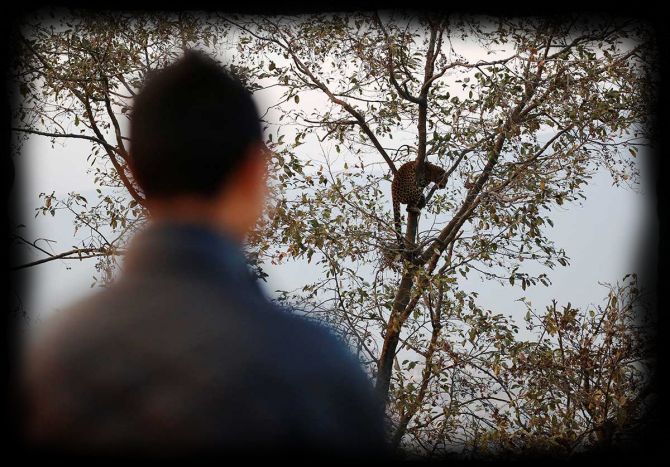
9. Which of them has a name derived from Hindi?
Answer: The name cheetah is derived from the Hindi word chita or 'spotted one', which is in turn derived from the Sanskrit word: citraka, which seems to be an umbrella term for both leopard and cheetah.
The word leopard comes to us, according to the Oxford Dictionary of English from late Latin's leopardus and late Greek's leopardos -- leon 'lion' + pardos.
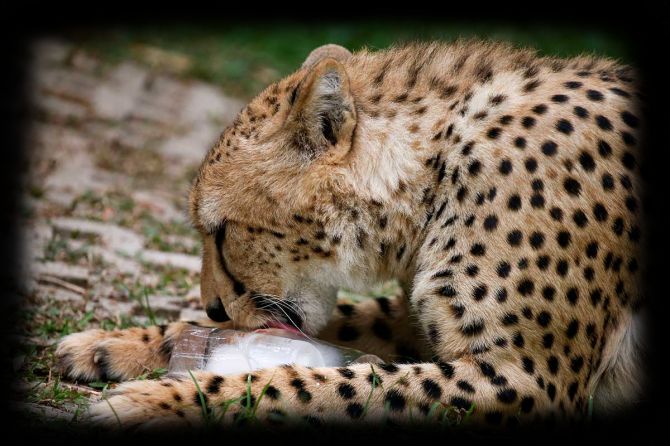
10. Who has more noticeable and numerous spots on their face?
Answer: The leopard's face is spotted. Cheetahs have just a sprinkling near their foreheads and what is more pronounced is the black tear lines framing their mouth, running down from their eyes.
Further the cheetah has spots while the leopard's spots -- which are rosettes -- are more irregular in shape.
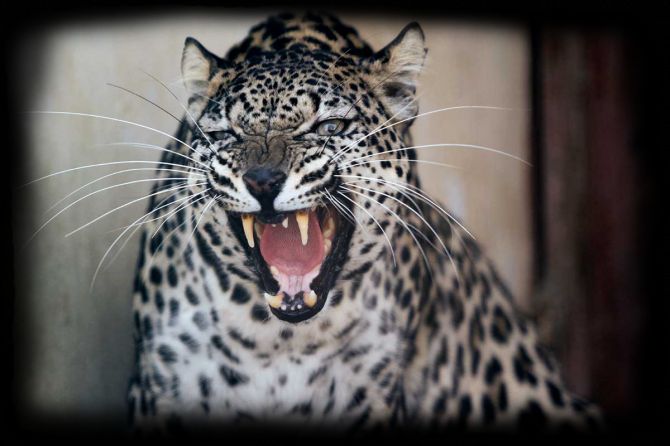
Feature Production: Ashish Narsale/Rediff.com
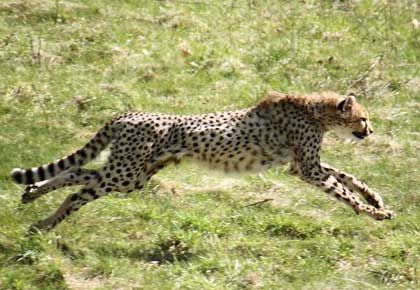











 © 2025
© 2025